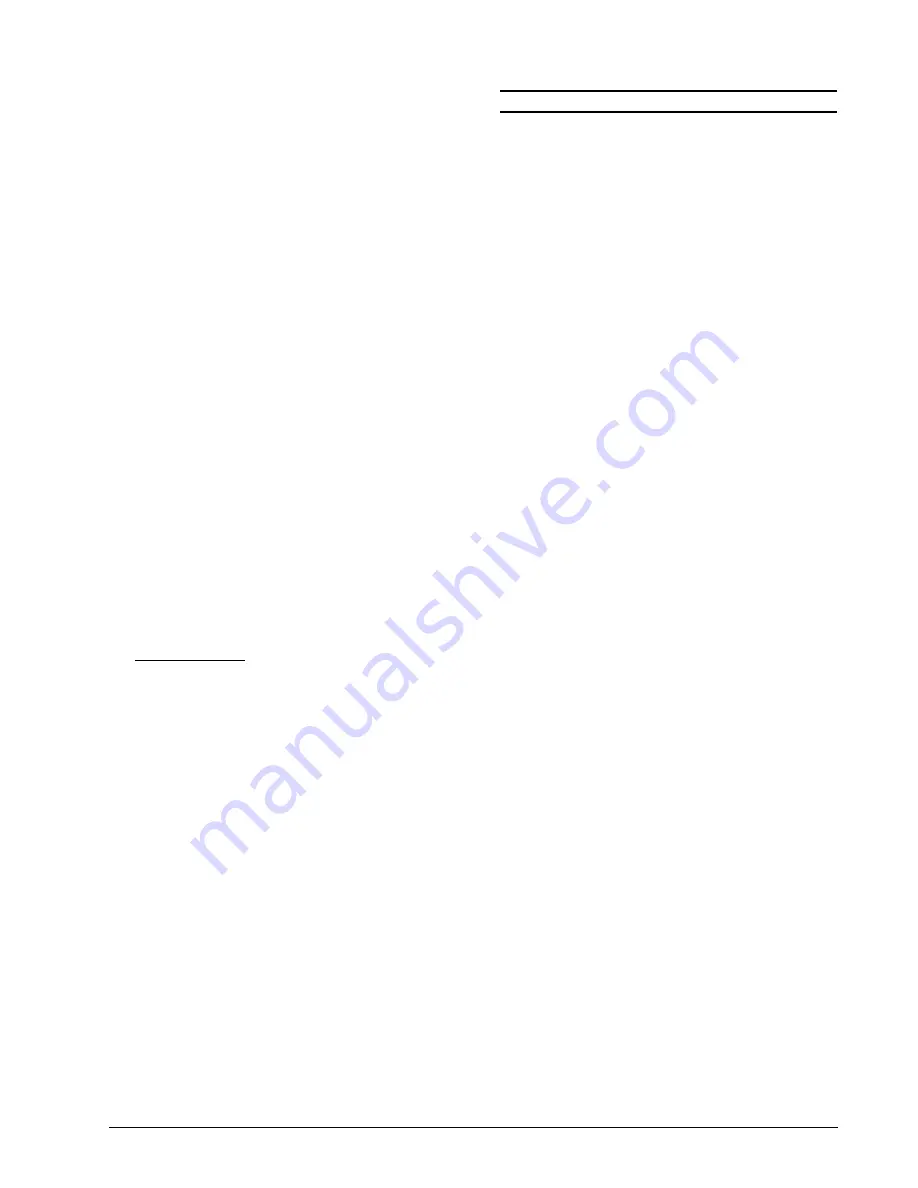
Model 1700 / 1750 Rotary Platform Abraser
21
Operating Instructions ver. 1.0
p/n 135505
Another option is to compare the abraded
specimens with a measured abraded standard. A
rating scale of 1
– 5 is commonly used to assist with
this type of evaluation, and often includes a
photograph depicting each ranking.
Depth of Wear (Change in Thickness)
Certain test requirements may call for measuring
the depth of wear. Using a thickness gage or
micrometer, measure the specimen thickness on
four points of an unabraded sample, 90° apart and
oriented 38 mm from the center hole (this will be
within the wear path). After abrading the sample,
repeat the measurements and record the
difference. To compensate for depth differences
around the specimen wear path, an average should
be computed from the four readings. To assist with
measuring at the same location, the back of the
sample can be marked accordingly.
The depth of wear can also be measured using an
Optical Micrometer or similar instrument. Place the
measuring device so that it spans both the abraded
and unabraded portion of the specimen. Calculate
the amount of wear by measuring the difference
between the abraded and unabraded areas in four
equal-distant points around the specimen, and
averaging the results.
EXAMPLE:
0.003” Average Depth of Wear in 5000 Cycles
0.003” x 1000 cycles = 0.0006 Wear Factor
5000 cycle test
(Depth Method)
Other Physical Change Methods
Performance specifications may be incorporated
when a material is used for a particular application.
For example, a tensile test might be utilized before
and after abrading a textile webbing material that is
used in the manufacture of seat belts. A burst test
could be incorporated in evaluating the abrasion
resistance of a rubber seal. Or, an air permeability
test might be included for medical packaging
materials that require the product be kept in a
sterilized environment.
INFLUENCES ON RESULTS
The measurement of abrasion resistance is a
complex phenomenon and may be influenced by a
number of factors. If there are significant
differences between reported test results for two
laboratories (or more), it is often attributed to
procedural errors or an instrument that is out of
calibration or one of the factors mentioned below.
Physical properties of the material, such as
hardness or resiliency, can influence resistance to
abrasion. In addition, material characteristics such
as type or amount of added substances are known
to be potential sources of variation. When testing
organic materials or coatings, ensure materials are
fully cured according to the manufacturers’
instructions. Many coatings show low abrasion
resistance the first few days but progressively
improve during the following 30 days as the coating
cures. Other items to consider include surface
roughness (e.g. type, depth and amount of
embossing); specimen flatness; and parallelism of
the opposing sides. Textile materials may be
affected by the inherent mechanical properties of
the fibers; the dimensions of the fibers; the structure
of the yarns; the construction of the fabrics; and the
type, kind, and amount of finishing material added
to the fibers, yarns or fabrics.
The type of abradant used plays an important role.
All abrasion tests are subject to variation due to
changes in the abradant during specific tests. To
minimize this variation, the abradant must be
cleaned at frequent intervals and checked
periodically.
Other factors to consider include the conditions of
the tests (temperature and humidity, conditioning of
specimens, etc.), and test methodology (vacuum
nozzle height, pressure between the specimen and
abradant, etc.). For comparable and reproducible
tests, it is recommended that all testing be
performed under conditions covered by an
established test procedure.
The measurement of the relative amount of
abrasion may also be affected by the method of
evaluation. This is especially true with visual
assessments, as the results may be influenced by
the judgment of the operator.
If a thorough investigation does not uncover the
cause for the difference, comparative tests should
be performed to determine if there is a statistical
bias between the laboratories. The test samples
used must be as homogeneous as possible, drawn
from the material from which the disparate test
results were obtained, and randomly assigned in
equal numbers to each laboratory for testing. The
test results from the laboratories should be





































